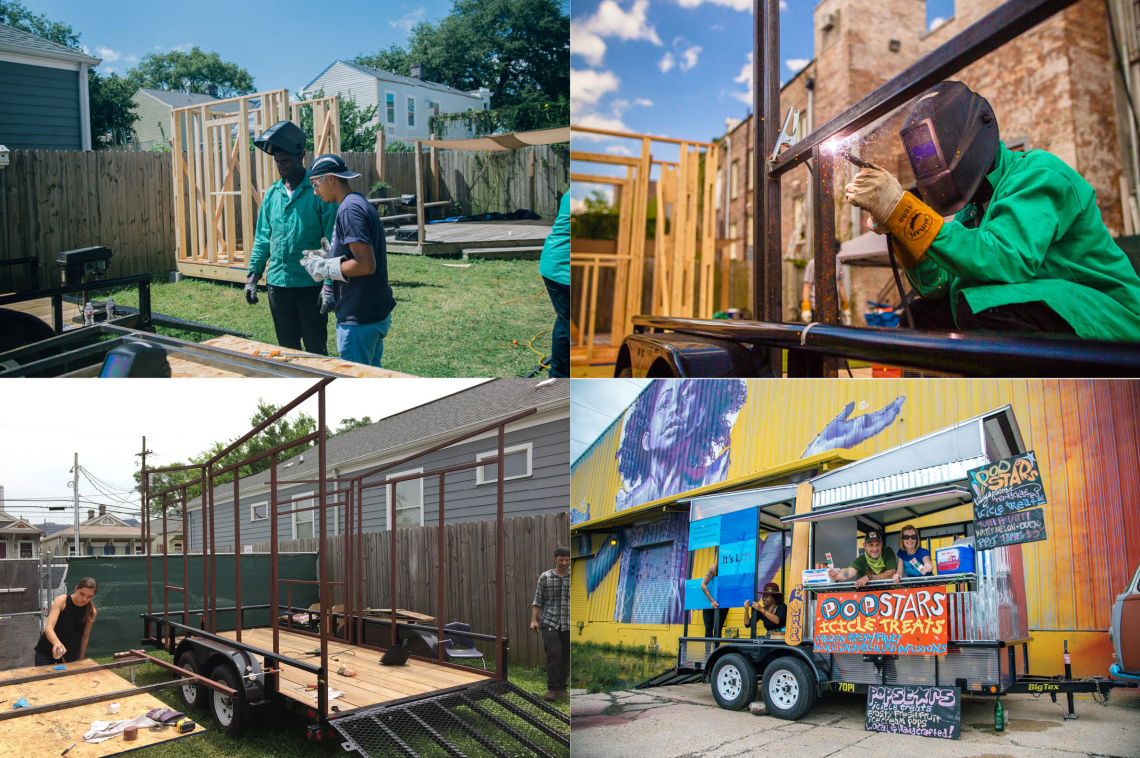
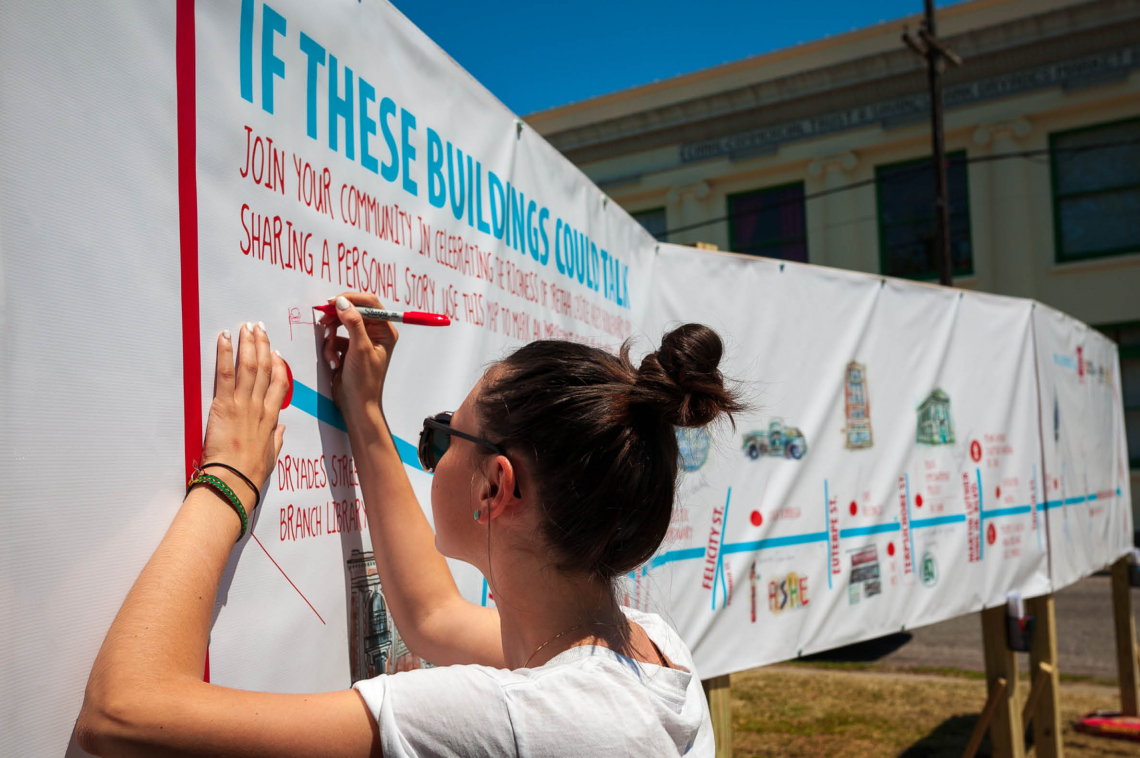
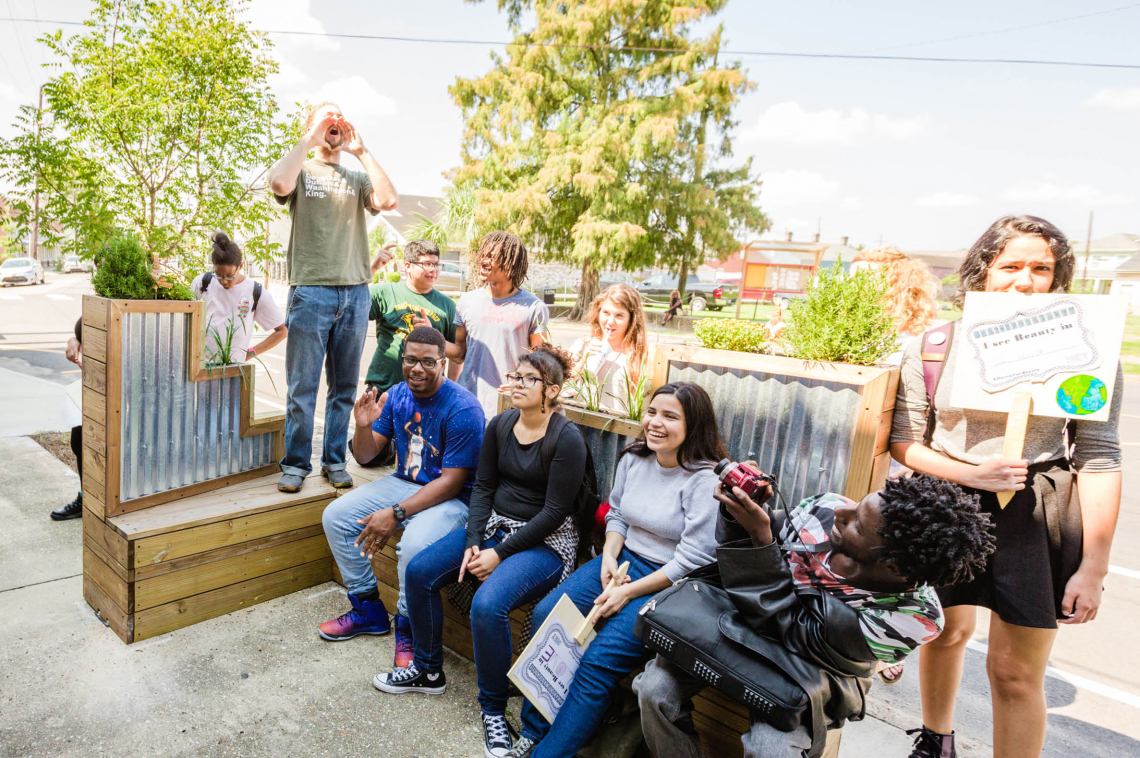
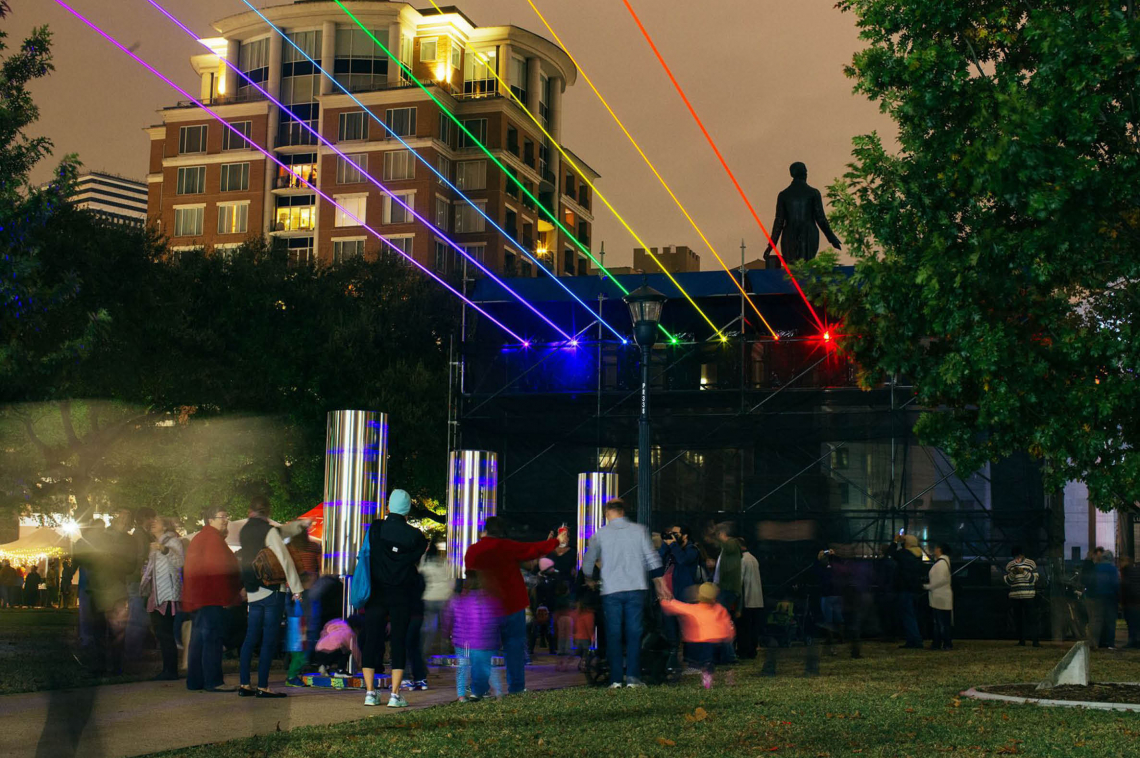
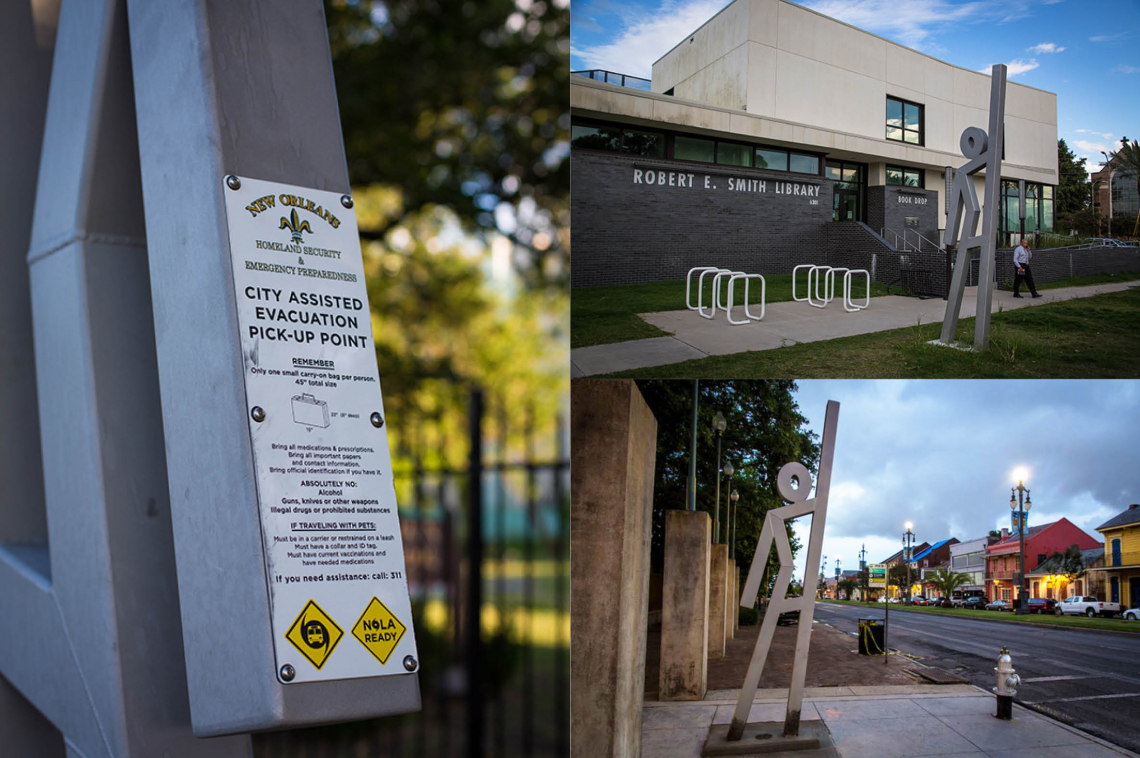
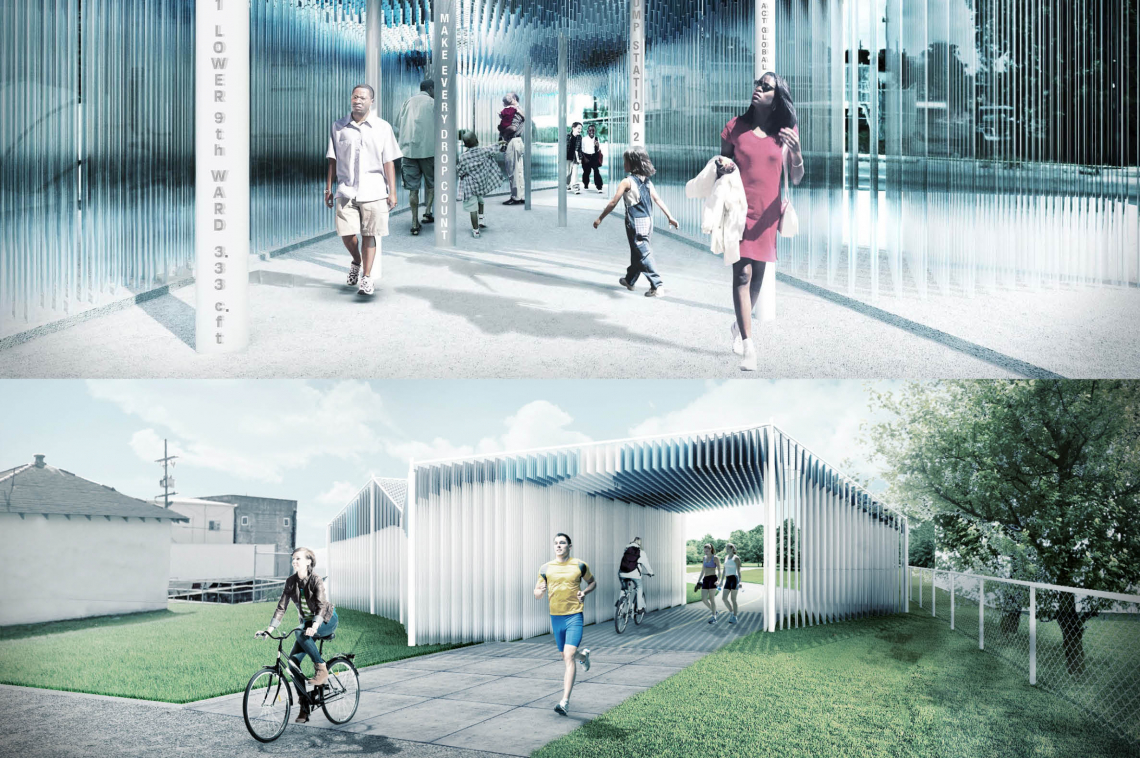
At the Arts Council New Orleans, our work is guided by one core belief, that art transforms communities. It has the power to illuminate, educate, and inspire. It is the heartbeat of communities and reminds us what we can be. It is a powerful tool, that when utilized appropriately, can serve as a catalyst for true, impactful change. This we feel is especially true when the projects we take on provide opportunities for us to bridge the gaps between artists and designers, community stakeholders, and the civic institutions and processes that drive the way our built environment is developed — allowing us to bring art into the public realm in intentional and thoughtful ways. This type of cross-sector collaboration leads to projects that create economic sustainability for local creatives, increase community engagement and connectedness, and work toward addressing some the larger hurdles our city faces.
There are numerous benefits to integrating art and creative placemaking into the everyday fabric of communities — a key one being increased safety. We’d like to shine some light on several projects that we believe have allowed us to take steps towards a safer New Orleans.
Youth Solutions
Youth Solutions (Y=S), a project that was made possible with support from the NEA and Art Place, is a youth and community development initiative that provides engagement and assessment methodologies to organizations working to address youth development, neighborhood blight, and under-investment in local creative communities. It is designed to bring together youth, designers, and artists, in an effort to design + build neighborhood projects that reflect the positive visions youth have for their communities.
The program — developed by the Arts Council in consultation with a working group of 12 artists, researchers, public health experts, architects, designers, and locally active community members — was imagined as a response to an acute need in New Orleans surrounding poverty, neglected landscapes, and violence, which affects young people in New Orleans disproportionately. Research shows that 40% of children aged 6-12 in New Orleans have seen someone shot; 31% have seen a dead body. This level of exposure to trauma may result in rage, depression, anxiety, and learned helplessness. Youth Solutions counters this by providing a forum for empowerment and an outlet for young people to directly impact and transform their environment — while simultaneously creating space for them to acquire the soft and technical skills necessary to step into skilled-trade professions.
Through this, we start to address the issue of public safety from several perspectives. First and foremost, we create a space for youth that keeps them off the streets and allows them to channel their energy into projects that they drive. This agency keeps them invested and engaged, anxious to come back every day see their ideas come to life. Secondly, as the drivers of these projects, young people have unique insight into nuances that play a role in their communities that we simply don’t have. Sure, we can understand some of the challenges, but the young people we work with are experts in this area and they help us to hone in on what exactly communities need or want. Lastly, the projects that youth have design + built thus far all share one thing in common: they create space for people to come together, in public spaces. Jane Jacobs wrote of the importance of activity on sidewalks and public spaces in The Death and Life of Great American Cities as a means to “maintaining the safety of the streets and the freedom of the city.”
LUNA Fête
Held in early December, LUNA Fête is the Arts Council's annual festival of light, art, and technology and remains the longest-running annual large-scale projection mapping festival in the country. Designed as a multi-pronged strategy to enhance the reputation of New Orleans as a hub of innovation and new technology, to increase the capability and access of local artists to new tools in contemporary practice, to illuminate the unique architectural landscape of our city, and ultimately to stimulate new investments in lighting and design for New Orleans’ insufficiently lit environments — enhancing the safety, security, aesthetics, and functionality of our neighborhoods.
Data Field
Data Field will be the most substantial public art project in New Orleans’ history. Surrounding a pumping station at a busy intersection, Data Field will serve as an aesthetic covering to a very visible eyesore and as an educational device that communicates information about the amount of water pumped under New Orleans’ streets on a daily, monthly, and yearly basis. In addition to demonstrating how public art can be integrated into infrastructure projects, Data Field will serve as tool to visually monitor how we live with water in a city that is incredibly vulnerable to flooding and storms.
EvacuSpots
EvacuSpots is a collection 17 14-foot sculpture that clearly and consistently mark evacuation points across the city of New Orleans — making it easier to find for residents who lack the ability to evacuate in advance of a hurricane. The sculptures, designed by artist Douglas Kornfeld, were inspired by the gesture people use to signal for a ride, as well as the gesture people make when asking for beads or throws during Carnival.





